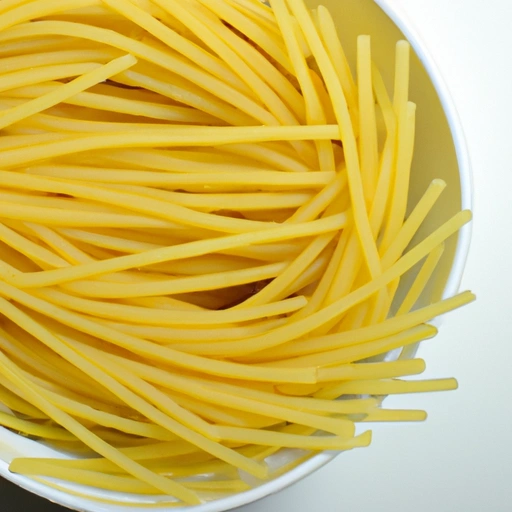Bucatini
Description

Bucatini is a type of pasta that has its origins in Italy, specifically in the regions of Lazio and Campania. Known for its long, hollow shape, bucatini resembles a thick spaghetti but with a hole running through the center. This unique characteristic allows sauces and seasonings to permeate the pasta, creating a delightful fusion of flavors. Bucatini's substantial texture holds up well to a variety of sauces, making it a versatile ingredient in many recipes. It is often made from durum wheat semolina, which gives it a firm texture that is perfect for al dente cooking.
Common uses
Bucatini is commonly used in Italian cuisine, where it is served with hearty meat sauces such as Bolognese or Amatriciana, or with rich cream-based sauces like Alfredo. It's also a popular choice for pasta salads and baked pasta dishes due to its robust structure.
Nutritional value
Calories
Approximately 210 kcal per 2 oz (57 g / 1/7 of a pound) serving.
Protein
Contains about 7 g of protein per 2 oz serving.
Fat
Bucatini pasta generally contains around 1 g of fat per 2 oz serving.
Carbohydrates
There are about 42 g of carbohydrates in a 2 oz serving.
Vitamins
Bucatini may contain various B-vitamins due to the fortification of enriched pasta products.
Minerals
Depending on the brand, bucatini can be a source of iron and other minerals.
Health benefits
As a whole grain pasta, bucatini can offer benefits such as improved digestion due to its dietary fiber content. It also provides sustained energy from complex carbohydrates and can contribute to muscle maintenance and repair with its protein content.
Potential risks
Overconsumption of pasta like bucatini can lead to weight gain due to its high carbohydrate content. Those with gluten sensitivity or celiac disease should avoid traditional bucatini made from wheat.
Common recipes
Bucatini is featured in classic recipes like Bucatini all'Amatriciana, a spicy tomato sauce with guanciale, and Bucatini Cacio e Pepe, a simple yet flavorful dish with cheese and black pepper.
Cooking methods
Boil in salted water until reaching al dente texture, typically for about 8-10 minutes. Bucatini can also be baked in casseroles or used in stir-fries for an unconventional twist.
Pairing with other ingredients
Bucatini pairs well with robust sauces, fresh vegetables, cheeses such as Pecorino Romano, and proteins like pancetta, bacon, or seafood.
Summary
Bucatini pasta stands out for its unique shape and versatility in the kitchen. With its satisfying texture and ability to marry well with a multitude of flavors, it's a beloved choice for pasta enthusiasts. Whether served in a traditional Italian sauce or as the foundation of a creative culinary concoction, bucatini offers a delightful dining experience that spans cultures and continents.